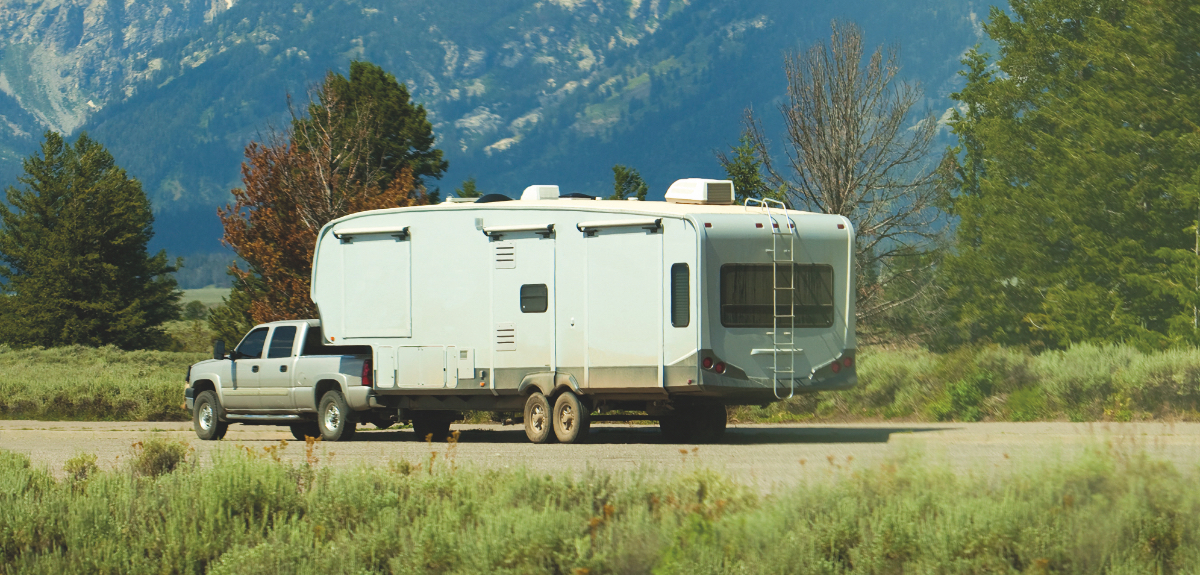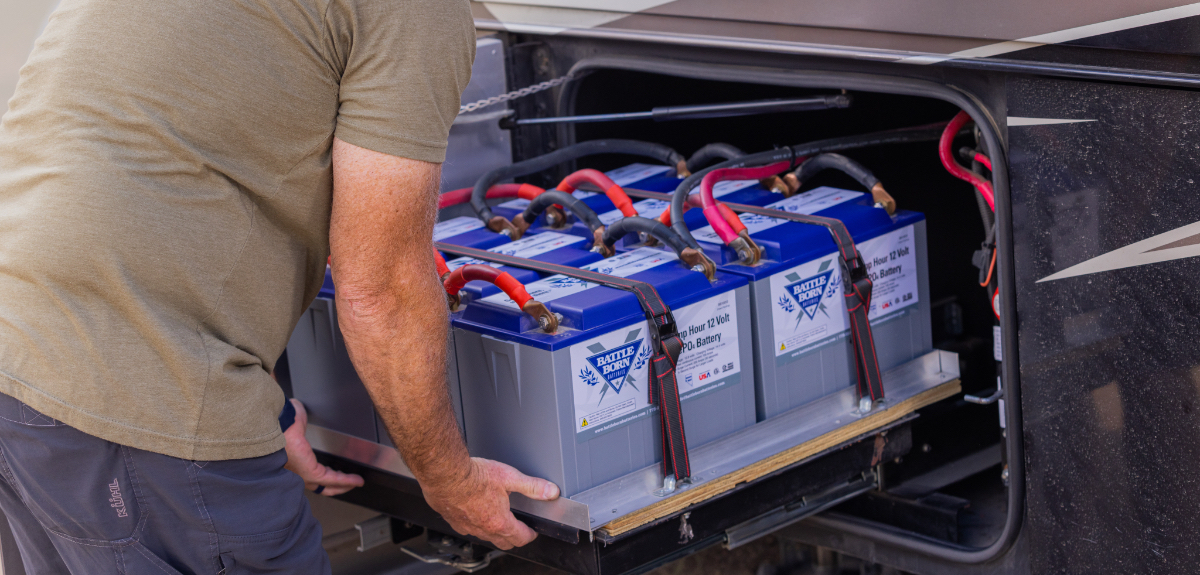Tech Q&A – September 2023
Name That Diesel Tuner, Shock Absorbers, Ford Tow Rating, and Fridge Power
Image Caption:
Diesel Tuning
Q: We have a 2013 RAM 3500 crew cab pickup powered by a Cummins 6.7-liter diesel and tow a 30-foot trailer with it. I want the best fuel economy with the most power/torque. What’s the best engine and transmission tuner?
—Oscar Escalate, Lincoln City, Oregon
A: To get the best fuel economy and most power and torque is a tall order, as it takes more fuel to make more power. One way to get close to that ideal is to choose a diesel tuner that has multiple settings to select from. For example, when climbing steep grades, you can choose a higher power setting, and when driving on flat roads, select economy mode.
I strongly suggest avoiding kits that delete or bypass emission controls, even for owners who don’t live in areas where state emission testing is done. Trucks that have emissions systems intact have better resale value; there’s no cost of having to remove or replace the emission system, nor is there a risk of potential fines. The stock exhaust is quieter and more relaxing to drive and friendlier to others. Additionally, there’s no billowing smoke from the tailpipe, and the exhaust— which we all have to breathe—is much cleaner.
Gale Banks tuners are very good, but according to its website, there isn’t one for your year truck. Calibrated Power (Duramax Tuner) offers tuners for 2013–2021 6.7-liter RAM Cummins models such as your truck, and I think this may be the best choice for you, although they are not inexpensive. Not only can the engine control module be tuned with the EZ LYNK devices, but the transmission control module of the 68FE transmission can be tuned as well. This is important because these automatic transmissions often fail when tuners that substantially raise power are added without doing anything to ensure transmission durability.
By changing transmission control software, you’ll be able to deliver more of the power your RAM’s engine makes to the wheels. Transmission adjustments can improve torque converter lockup and shift scheduling to enhance power delivery throughout the usable rev range. Click here for more information.
Final parting thoughts: The harder you push the engine and drivetrain, the more likely it is to wear out early or fail altogehter. I recommend conservative modifications and going easy on equipment to keep it going reliably for a long time.
Tow Rating
Q: I really like your articles! We have a 2021 Northwood Nash 18FM. What is the towing capacity of my 2017 Ford F-150? I know a ballpark range but would like to see what you come up with. I’d like to get a lightweight fifth-wheel, if it’s feasible to do that with a half-ton truck. I do have the 7,050-pound-GVWR model equipped with the max trailer tow package.
—Byron Farnes, Meridian, Idaho
A: So-called half-ton pickups (such as the Ford F-150, RAM 1500, Chevy Silverado 1500, and GMC Sierra 1500) have a wide range of tow ratings depending on their options. They don’t have a great amount of fifth-wheel pin-weight capacity due to the rear axle and tire ratings. Keep in mind that while a travel trailer may typically have 10–12% of its weight on the hitch, a fifth-wheel will have about 15–18% or more pin weight.
Click here for Ford’s tow rating information for a 2017 F-150 pickup.
Shock Absorbers for Trailers
Q: There has been some information published about adding shock absorbers, or other products, that could improve the travel-trailer towing experience. Would you be able to provide feedback on these products? I currently have a 2020 Keystone Premier Bullet 34BIPR dual axle that I tow with a 2021 Ford F-150 crew cab, which has a towing capacity of more than 13,000 pounds. My vehicle has plenty of power for towing, but at times there’s a fair amount of bouncing. I would consider installing shock absorbers if that would help lessen the bounce.
—Tim Peterson, Neenah, Wisconsin
A: I strongly recommend installing shock absorbers if your trailer doesn’t already have them. Leaving them off saves cost for the RV manufacturer but is tough on the trailers and contents. There are a number of kits available designed specifically for trailers, which makes them easy to install. The kit can be purchased directly from Camping World.
Try adding that before adding any other suspension modifications, and see if you’re satisfied with the ride improvement. There are some other mods available if you are still not satisfied, and be sure to have your trailer tires balanced for the same reasons your tow rig’s tires are balanced.
Residential Refrigerator Power
Q: I’m looking to buy a 2021 Dodge Dynamax Isata 5 series 30FW 4×4 Xplorer Package with a residential refrigerator and eight 100-watt solar panels charging four lithium batteries. The owner wasn’t sure about the size of the inverter. The owner tells me that on sunny days and through the night, he never needs to run the generator, but on cloudy days he does for a short time.
My concern is, despite what I’ve been told, the electrical capacity won’t be enough. We do a lot of dry camping in the woods and desert, including dry campgrounds. I don’t want to run the generator and don’t want to make a wrong decision on this one or any other one. Is the technology getting better now?
—Dave Dickens, Reno, Nevada
A: Residential refrigerators seem to be taking over in motorhomes and causing concerns like this. In the region where you live, there are a lot of bright, sunny days, which is good for solar generation. Why don’t you try it as is? If you have to add a little power on cloudy days, you can do some charging with a quiet inverter-type generator. If you’re not happy with the results, consider changing to a propane-electric (RV) refrigerator. You can get a good used one from RV salvage instead of spending thousands on additional solar equipment and batteries.
Alternately, there are a variety of new 12-volt-powered compressor-type refrigerators on the RV market today. They consume far less power than a straight residential-type fridge, the use of which also involves a power-hungry inverter to provide the 120 volts AC for operation. Take a look at the new 12-volt compressor fridges, and you may like what you see.
Screen Over Furnace Outlet
Q: We have a Grand Design Imagine 2600RB. I have installed a purpose-built stainless screen that attaches to the RV’s exterior heater air inlet/outlet. Some have said that was a good idea to keep out the bugs, which seem to like to nest in the propane’s exhaust port. Others think that should not be done, as the screen may cause the flow of exhaust back into the combustion air inlet. I’ve had the screen on my RV’s heater for years with no problems; it keeps the bugs out, and there have been no issues with the furnace. Should I keep the purpose screen or remove it?
—Jim Volner, Merrimack, New Hampshire
A: I’m not clear if you mean you built the screen or bought one, but these have been available through Camping World and other suppliers for many years, and I’ve never heard of any problems. If it has worked that long for you without a problem, I’d say keep using it. There is probably a slight back pressure increase, but it’s negligible.
The use of bug-proofing screens over propane-fueled-device outlets is more important during long-term storage when the critters can move in unmolested for months. The screens are okay when you’re using the RV, but mainly consider them during storage.
Drinking-Water Hose Storage
Q: We use an inline water filter when camping. What is the safest and best way to store the filter between camping trips? Storage is anywhere between 1–3 weeks. Do I connect the ends of the hose together with the filter attached? Or remove the filter and cap the ends off? Or is there another way?
—Kevin Pilotte, via email
A: I would remove the filter, drain it, and then cap the ends off. This is more likely to keep it clean inside.
Generator Autostart
Q: We have a 2018 Forest River Georgetown GT5 31L5 Class A motorhome. I’ve been looking for a third-party generator auto-start that will work on my motorhome but have been unable to find one. I would like the setup to auto-start if shorepower is lost or when boondocking and the temperature in the unit exceeds a certain temperature. Is there anything out there? The generator is a 5,000-watt gasoline-powered Onan.
—Kieth Boldiszar, Littleton, Colorado
A: There are a number of auto-start systems available. Familiarize yourself with how they work and link remotely (via Wi-Fi or cellular) before buying. Onan makes one specifically for its generators called the EC-AGS+ Wireless RV Auto Generator Start System.
Using your smartphone, the system enables automatic, manual, or voice-activated start, climate monitoring, and key maintenance reminders. Plus, the batteries can be charged before quiet hours. You can also start the generator from the app or through voice activation with Siri or Google Assistant.
Another system compatible with Onan is the RV Automatic Generator Start System (AGS) by RV Automations.
Lightweight Generators – Comments
Regarding the “Lightweight Generator” letter from Lee Sheldon in the June 2023 issue, I would like to offer the following in addition to your advice. We have a 13,500-Btu A/C unit and I wanted plenty of power, so I opted for about 4,000/3,200 watts. I achieve this by using two 2,000/1,600-watt inverter generators and connecting them in parallel if we use the A/C. Admittedly, we don’t use A/C often; however, the advantage is that each unit weighs 49 pounds, while a 3,000–4,000-watt generator is 125–150 pounds, which is a lot to lug around.
You recommended a 2,300/2,000-watt generator, which is sufficient and generally just a little more than 50 pounds. But I’m a big fan of overkill, so I wanted 4,000/3,200 watts. Other advantages of two generators:
1) Storage. The 2,000-watt units are smaller, so they’ll fit where a larger unit might not, such as pass-through storage where the door might not be big enough for a larger unit to fit through, and we can spread out the weight. For example, I put one on each side of the bed.
2) Redundancy. If you have one generator and it fails, you’re out of luck. If we have one fail, we can’t run the A/C, but at least we can still use it to recharge the coach battery, use the microwave, etc. We go to high-altitude (7,200 feet) and low-altitude (1,200 feet) camping sites. Sometimes, I’ll have one with the low-altitude jet installed and the other with the high-altitude jet installed. If we just had a 3,500-watt generator, I’d have to be switching jets all the time.
3) Fuel efficiency. Most of the time, we’re using just a small amount of power when we need the generator. A 2,000-watt generator is going to use less fuel. And I’ll be the first to admit, with the 9 mpg that our tow rig gets, saving a half-gallon of generator fuel during a camping trip is pretty insignificant, but hey, every little bit helps.
When only using one, I can refuel the non-running unit and start it up, and then shut down the other unit. When that unit is cool, then I can refuel it. This is nice when using our satellite TV as it takes a long time for the unit to boot up when first powered on.
Disadvantages: You’ll have two generators to maintain. Personally, this hasn’t been an issue for me. I put them side by side on my workbench to change the oil and clean the air filters, and I don’t think that doing two units really takes that much more time than one unit. The cost of two 2,000-watt units may be more than a 2,300–3,500-watt unit depending on brand, model, etc.
Not all of what I’ve written applies to Lee because he has a solar system installed, but I thought I’d offer this info as food for thought. To date, I’ve never noticed anyone who used two generators.
—Steve Mark, Chandler, Arizona
Thanks for writing this well-thought-out letter, Steve. I think this will help readers consider the pros and cons. You pretty much covered most all of the issues at hand. I have seen a few people run dual generators, but, of course, this requires a special wiring harness at additional cost. I have a dual-fuel Champion 2,500/1,875-watt generator that weighs 40 pounds dry. I still think using a soft-start system is cheaper and easier than buying and running two generators.
Have a Question?
Looking for answers on all things RV, including systems, engines, accessories, or construction? Submit it to our expert at [email protected] and it may be selected for publication. You must include your name, city and state, phone number (will not be published), and type and model of your RV.






